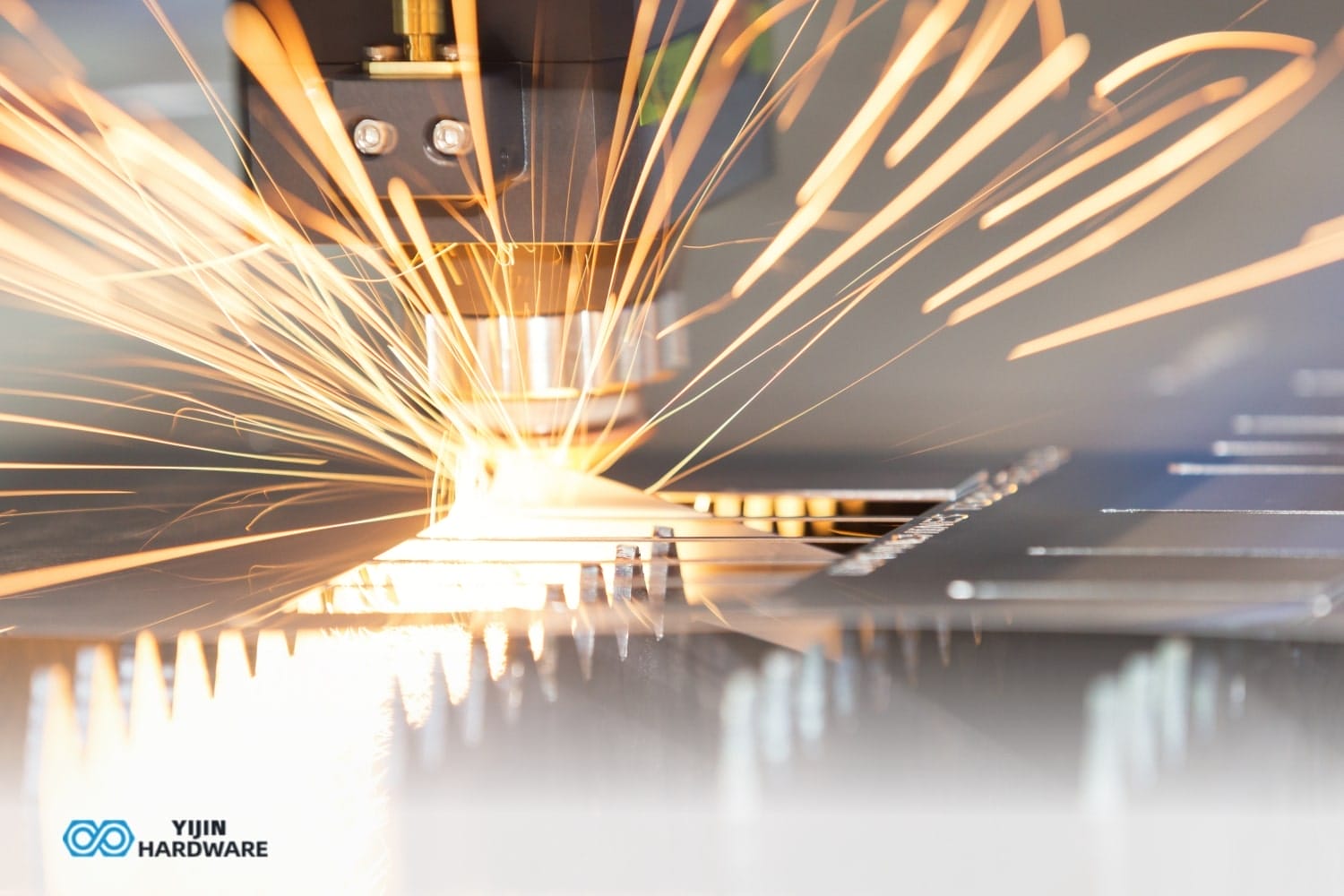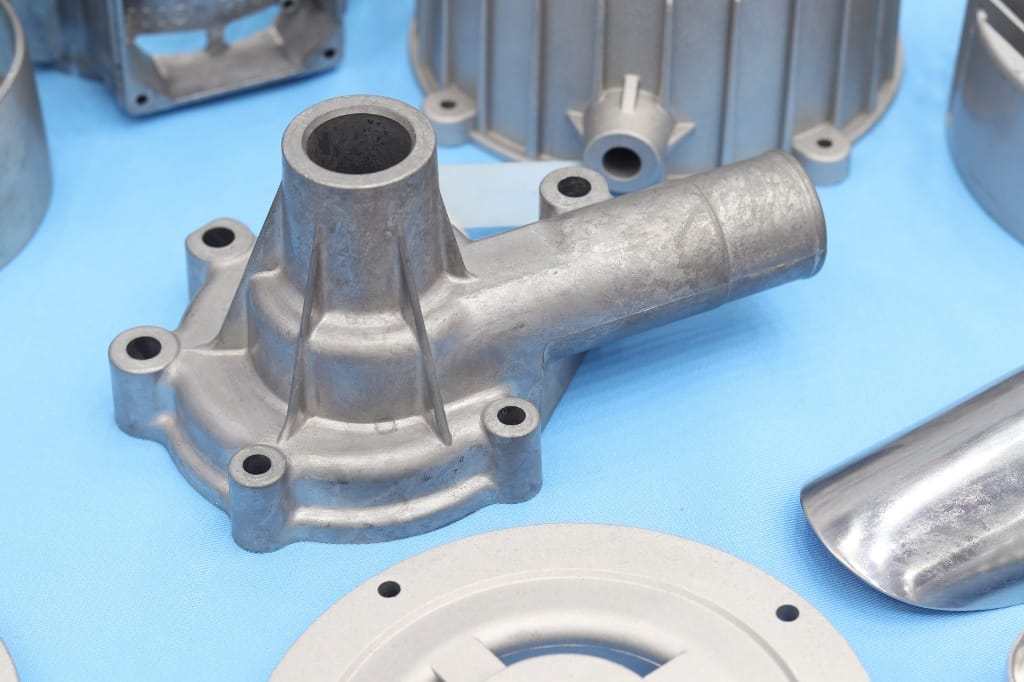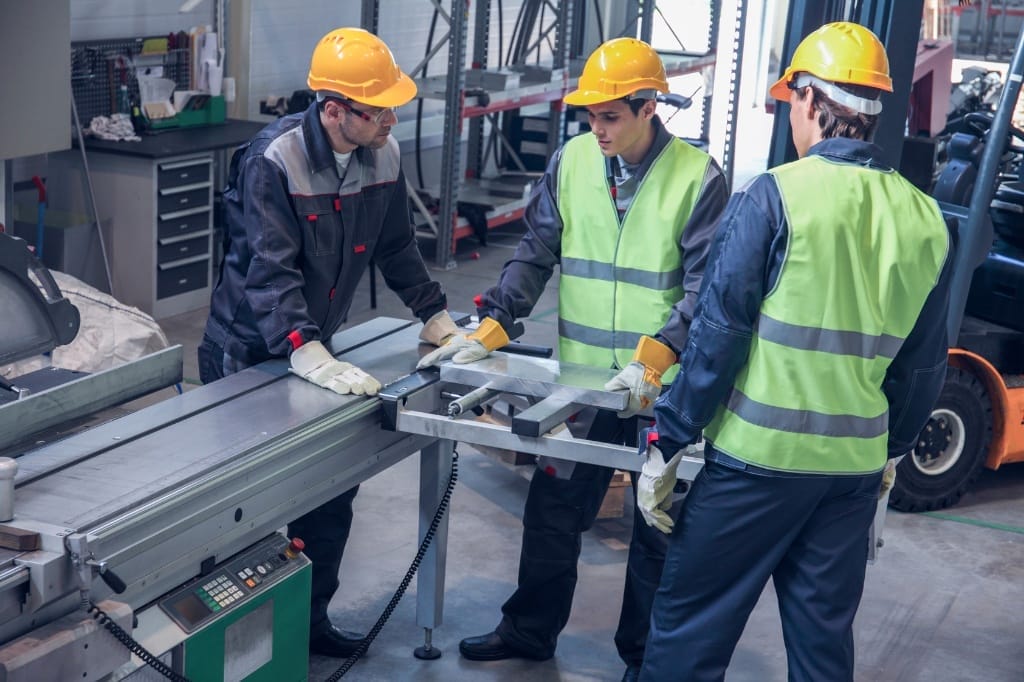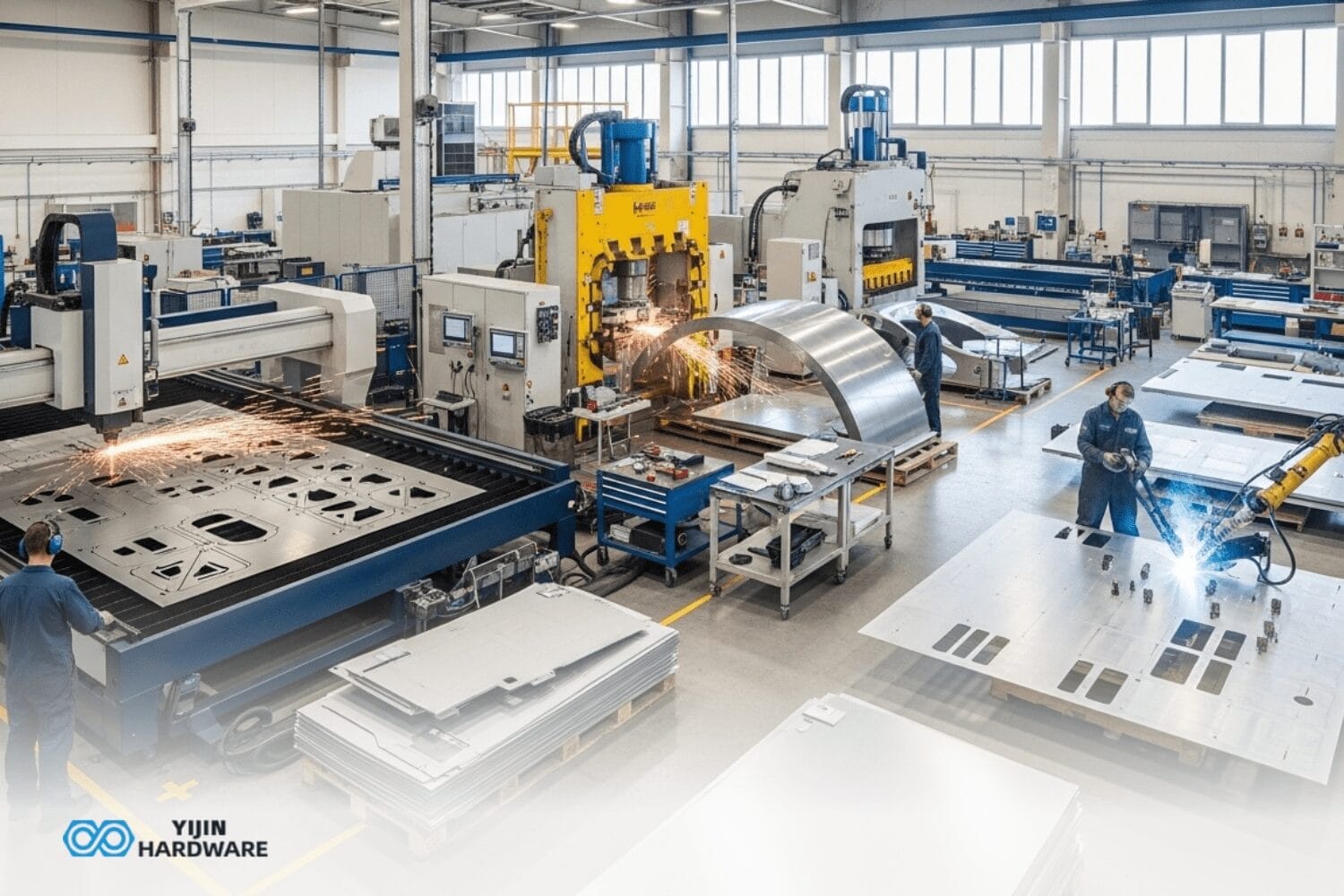Laser welding is the process of joining materials with lasers. These materials are mainly metals, and the joining is done through a focused laser beam. This welding method has become increasingly popular in a variety of industries because of how efficient it is as well as the high weld quality it produces.
For businesses seeking precise manufacturing solutions, outsourcing a laser cutting online service can complement laser welding projects by providing accurately cut components ready for assembly. Reliable providers like Yijin Hardware ensure high-quality results with advanced CNC technologies tailored to your specifications.
Key Takeaways
- Laser welding gives you high accuracy with fewer heat-affected zones. This reduces the risk of distortion.
- Laser welders can weld numerous materials, including steel, titanium, and thermoplastics.
- The laser welding process is faster than traditional methods, which improves production rates.
- Laser welding systems are easily automated, making them a good choice for industrial applications.
- Even though the laser welding equipment costs are high, it results in lower operational costs and faster production times.
What is Laser Welding?

Laser welding is a process that uses a focused laser beam to weld or join materials. This beam is used to melt their edges together. The concentrated laser energy from the laser beam heats the surfaces of the materials until they reach their melting point.
After the material is melted, the materials fuse together as they cool down. This creates a solid joint. Laser welding solutions are popular because they can produce clean and strong welds with minimal thermal distortion compared to traditional welding techniques like arc welding or tungsten inert gas (TIG) welding.
The technology behind laser welding systems gives you the ability to use high power levels for incredible accuracy. This allows manufacturers like Yijin Hardware to create intricate designs and weld thin materials using laser welding equipment without compromising on strength or quality.
Types of Laser Welding
There is more than one type of welding method with lasers! Here are the two main processes of a laser welding machine:
- Conduction Welding: This method involves slowly melting the metal at the joint without reaching vaporization temperatures. It means you can get high-quality welds with very little spatter and far fewer fumes. However, this is usually slower than keyhole welding.
- Keyhole Welding: This is a more aggressive method of using a laser to weld! With this technique, you melt and vaporize the metal at the joint, creating a sort of “keyhole” effect. This lets you get deeper penetration into thicker materials. Even though it is faster and more suitable for high-volume production, it can lead to porosity if you’re not careful.
There are also hybrid methods like laser-hybrid welding. This combines laser and arc welding techniques to improve penetration depth and weld quality.
Lasers Used in Laser Welding
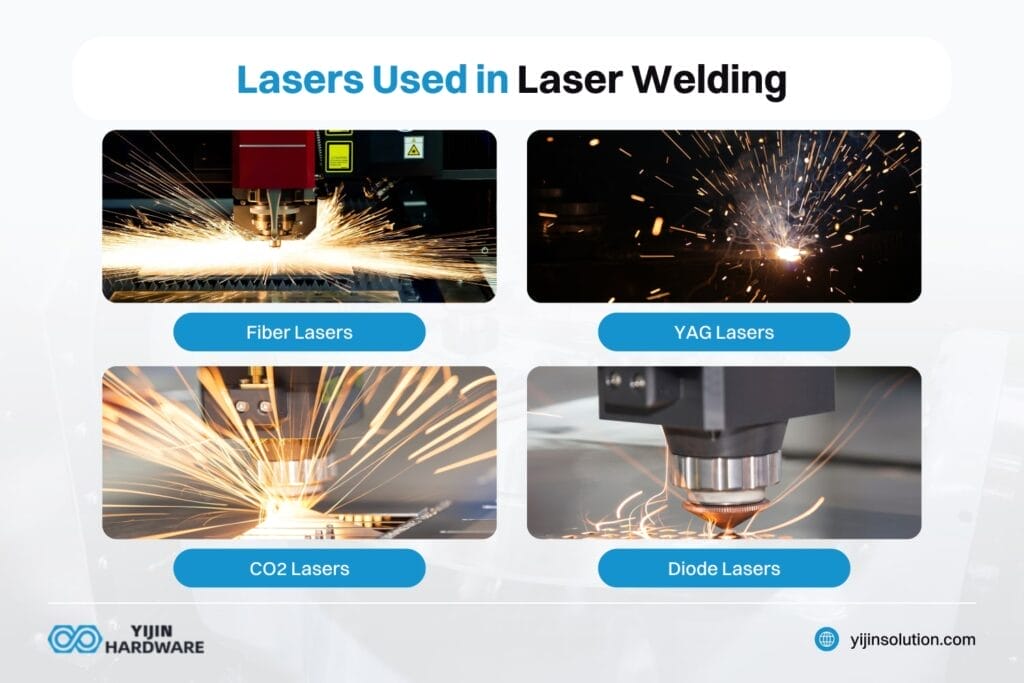
Here are a few types of lasers that are used in laser welding applications:
- Fiber Lasers: These lasers are highly efficient and quite small. They are mainly used in industrial applications because of their quality and reliability.
- Yttrium Aluminum Garnet Lasers (YAG Lasers): These lasers can work in both continuous and pulsed modes. This gives you more flexibility for different welding needs.
- CO2 Lasers: These lasers are often used for cutting and engraving. CO2 lasers can also be effective in certain welding situations, but they usually need more maintenance than fiber lasers.
- Diode Lasers: A diode laser is a small and energy-efficient option that is perfect for small-scale applications or handheld devices.
There are both advantages and disadvantages of laser welding equipment, depending on your type of laser and your application needs.
How does a Laser Welder Work?
Let’s look into how exactly laser welding works. As noted, a focused laser beam is used to make a joint between two materials. The concentrated light energy from the laser source quickly heats the material until it melts on the interface.
Once adjusted and activated, the laser beam produces enough energy to create a molten pool at the joint. As the pool cools and solidifies, it creates a powerful metallurgical bond between the pieces.
Depending on the material thickness and type of material being welded, you can choose between continuous or pulsed modes. A lot of the time, inert gas shielding is used during the process to protect against oxidation or contamination. This is usually the case if you’re working with reactive metals like titanium or aluminum.
What is the Laser Welding Process?
Now let’s get into the process used for welding technology with lasers. Here are the main steps in the process:
- Preparation: Although laser technology is advanced, that doesn’t mean it cleans itself! Start by cleaning and positioning the parts accurately to make sure that there is a tight fit at the joint.
- Focusing: Then, you need to adjust the laser beam’s focal point to the area that you want to test. Repeat this step when you’re ready to weld. This beam will be used to join the materials.
- Testing: Next, you need to conduct preliminary tests on scrap material to make sure that there is the right energy output coming out of the pulsed laser without overheating.
- Welding: Activate the laser beam to fuse the material by melting it at the joint. You do this by moving the laser power along a predetermined path.
- Cooling: Finally, the last step for using laser welding techniques is to let the material cool. You can let it cool naturally or use controlled cooling methods after welding to solidify the joint properly.
What Materials Can You Laser Weld?
The flexibility of laser welding makes it a great choice for industries that need precise joins across a few different material types, like the automotive industry. Laser welding can be applied to many materials, including:
- Metals: It’s common for many metal parts to be welded, such as stainless steel, carbon steel, aluminum alloys, copper alloys (like brass), titanium alloys (used in aerospace), and nickel alloys.
- Plastics: Some thermoplastics like polycarbonate and nylon can also be welded using laser technology.
- Composites: For more advanced applications, you can join carbon fiber-reinforced plastics (CFRPs) with metal components.
Advantages of Laser Welding
Here are the benefits of laser welding:
- High Weld Quality: As the laser beam is so focused, you get high weld quality with very few defects.
- Reduced Heat-Affected Zone (HAZ): This is a key advantage of laser welding! There is less heat input, so this leads to smaller HAZs compared to arc or TIG welding.
- Speed: Laser welding has faster processing speeds. This improves productivity without sacrificing quality.
- Material Flexibility: This technology can join both similar and dissimilar materials easily.
- Automation Potential: Laser welding can be integrated into automated systems for consistent results across production runs.
Yijin Hardware: Expert CNC Manufacturing
Laser welding is a great welding solution for modern manufacturing problems. It can produce accurate welds across diverse materials, which is especially important in industries like automotive and aerospace.
If you’re looking for reliable manufacturing solutions that use cutting-edge technologies like laser welding, Yijin Hardware is ready to help! We can assist with expert CNC manufacturing services tailored to your needs. Reach out today for a quote!
FAQs on What is Laser Welding?
Is laser welding as strong as MIG welding?
Yes, laser welding can be as strong as MIG welding (metal inert gas welding) in certain applications, especially for thinner materials or where precision is key. In fact, it’s around 3 to 10 times faster, and laser welding doesn’t need many passes or ultra-high heat to get the job done, which can make welded materials weaker. However, the overall strength depends on factors such as material thickness, weld preparation, and joint design.
What are the disadvantages of laser welding?
A big disadvantage of laser welding is that it has quite an expensive upfront cost. The initial cost of a laser welder can be off-putting, but it can also save you time and money in the long run!
Is laser welding as strong as TIG?
Laser welding is stronger than TIG in specific cases, especially for fine, precise welds with smaller HAZs. Laser welding usually has shorter HAZs and can be more accurate. It’s important to note that welding strength will always depend on the materials being used, as well as the welding conditions.
Back to Top: What is Laser Welding?


